Lymph glands nodes. Understanding Lymph Nodes: Function, Location, and Their Role in Cancer
What are lymph nodes and how do they function. Where are lymph nodes located in the body. How do lymph nodes interact with the immune system. What is the relationship between lymph nodes and cancer. How can lymph node health be maintained.
The Lymphatic System: An Essential Component of Immune Defense
The lymphatic system plays a crucial role in maintaining our body’s health and defending against diseases. It is an intricate network of vessels, organs, and tissues that work in concert to support immune function and maintain fluid balance in the body. At the heart of this system are lymph nodes, small but mighty structures that act as filtration centers for lymph fluid.
What are Lymph Nodes?
Lymph nodes are small, bean-shaped organs that form an integral part of the lymphatic system. These nodes are strategically positioned throughout the body, acting as checkpoints for the lymph fluid that circulates through the lymphatic vessels. Their primary function is to filter this fluid, trapping harmful substances such as bacteria, viruses, and even cancer cells before they can spread further in the body.
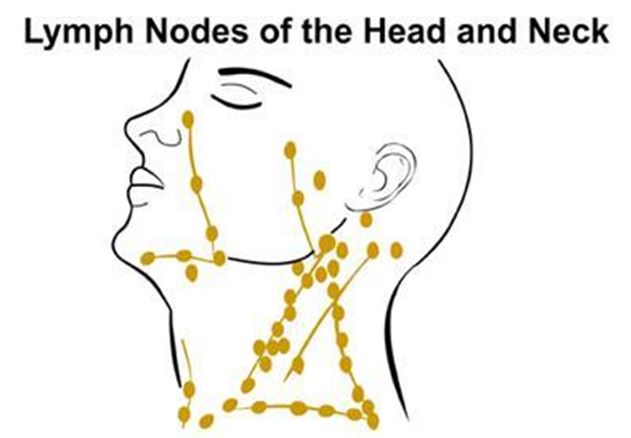
The Composition of the Lymphatic System
The lymphatic system is composed of several key components:
- Lymph vessels: These are the channels through which lymph fluid travels
- Lymph fluid: A clear, colorless fluid that carries nutrients and waste products
- Lymph nodes: Small, bean-shaped structures that filter lymph fluid
- Other lymphoid tissues: Including the spleen, thymus, tonsils, and adenoids
The Strategic Placement of Lymph Nodes in the Body
Lymph nodes are not randomly distributed throughout the body. Instead, they are strategically located in areas where they can most effectively monitor and filter lymph fluid from various regions of the body. Understanding the location of these nodes is crucial, especially in the context of disease diagnosis and treatment.
Common Locations of Lymph Nodes
While there are hundreds of lymph nodes throughout the body, some of the most notable clusters are found in:
- The neck (cervical lymph nodes)
- The armpits (axillary lymph nodes)
- The groin (inguinal lymph nodes)
- Between the lungs (mediastinal lymph nodes)
- Around the intestines (mesenteric lymph nodes)

Each group of lymph nodes is responsible for draining and filtering lymph from specific areas of the body. For instance, cervical lymph nodes drain the head and neck region, while axillary lymph nodes are responsible for the upper limbs and chest.
The Vital Role of Lymph Nodes in Immune Function
Lymph nodes are not just passive filters; they are active participants in the body’s immune response. These small structures house a variety of immune cells, including lymphocytes, which are crucial for identifying and combating pathogens and other threats to the body’s health.
How Do Lymph Nodes Support Immune Function?
Lymph nodes support immune function in several ways:
- Filtering lymph fluid to trap harmful substances
- Providing a site for immune cells to interact and activate
- Producing antibodies to fight infections
- Storing immune cells for rapid deployment when needed
When the body encounters a pathogen, the relevant lymph nodes often become enlarged as they work overtime to mount an immune response. This swelling is a sign that the immune system is actively fighting an infection or other threat.
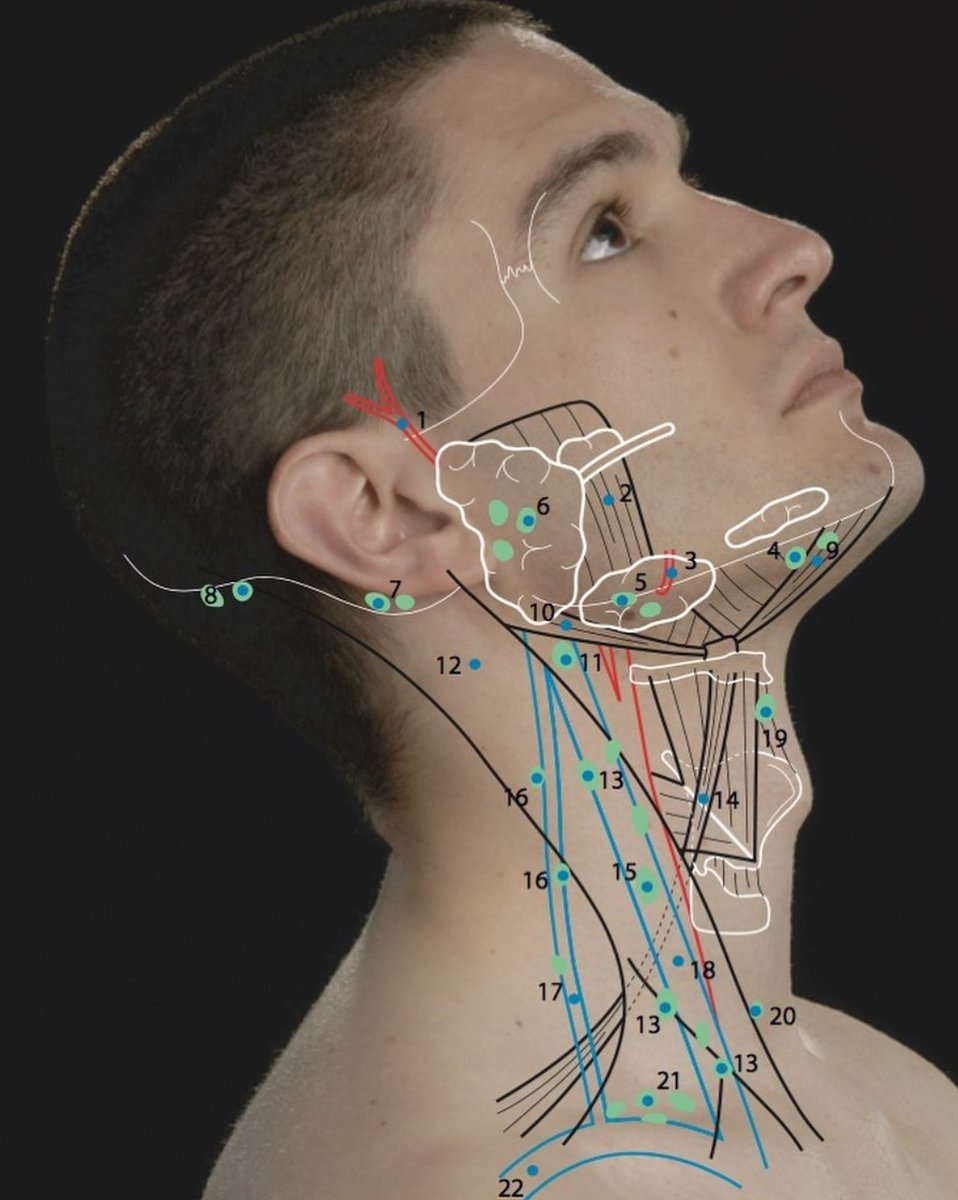
Lymph Nodes and Cancer: A Complex Relationship
The relationship between lymph nodes and cancer is multifaceted and significant in both the diagnosis and treatment of various malignancies. Understanding this relationship is crucial for healthcare providers and patients alike.
How Can Cancer Affect Lymph Nodes?
Cancer can interact with lymph nodes in two primary ways:
- Primary lymph node cancer: Cancer that originates in the lymph nodes, such as lymphoma
- Metastatic cancer: Cancer that spreads to the lymph nodes from another part of the body
In many cases, when cancer spreads beyond its original site, the lymph nodes are often the first place it appears. This is why doctors frequently examine lymph nodes when diagnosing and staging cancer.
The Impact of Cancer on Lymphatic Function
Cancer and its treatments can significantly impact the lymphatic system:
- Blockage of lymph vessels by tumors
- Damage to lymph nodes from radiation therapy
- Surgical removal of lymph nodes for cancer staging or treatment
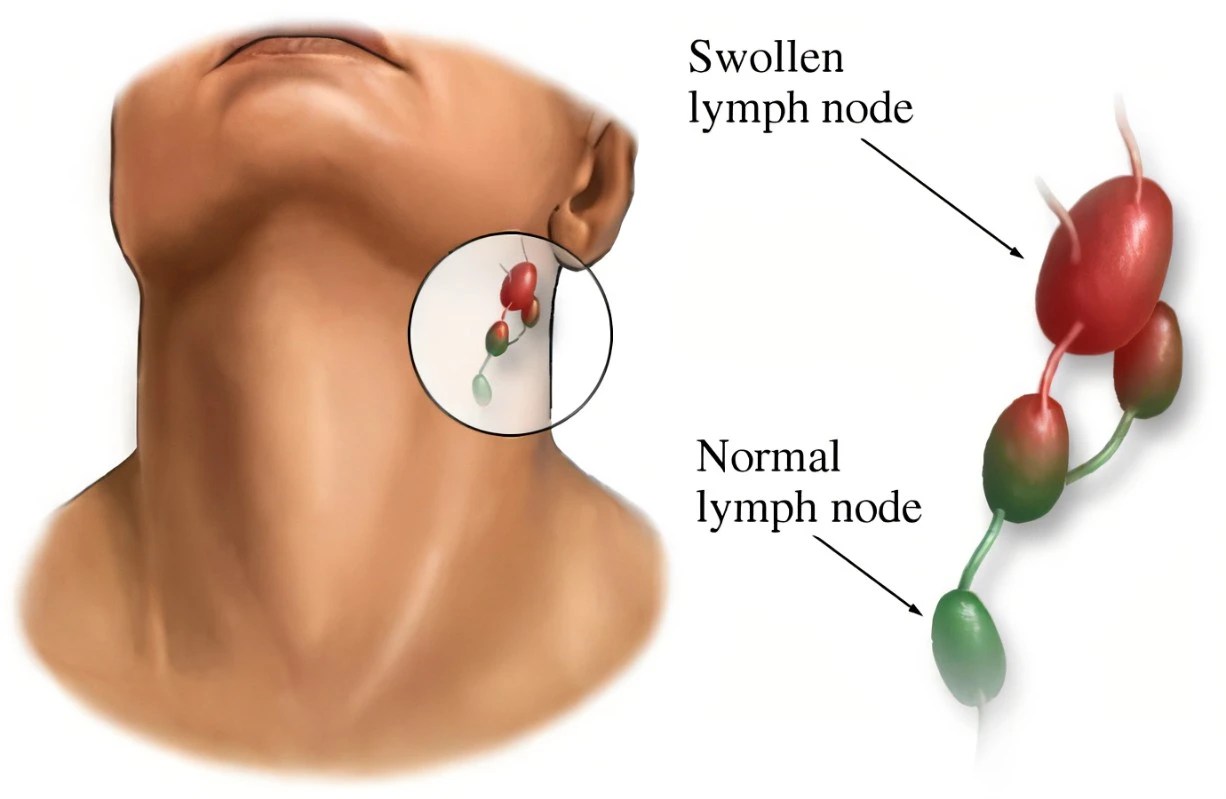
These effects can lead to a condition called lymphedema, where lymph fluid builds up in tissues, causing swelling. Managing and preventing lymphedema is an important aspect of cancer care and survivorship.
Diagnosing Lymph Node Issues: When to Seek Medical Attention
While lymph nodes often swell as part of normal immune function, persistent or unexplained swelling can be a sign of underlying health issues. Knowing when to seek medical attention is crucial for early detection and treatment of potential problems.
Signs and Symptoms of Problematic Lymph Nodes
Some signs that warrant medical attention include:
- Lymph nodes that are painless, firm, and gradually increasing in size
- Swollen lymph nodes that persist for more than two weeks
- Lymph node swelling accompanied by unexplained weight loss, fever, or night sweats
- Hard or fixed lymph nodes that don’t move when you try to push them
If you experience any of these symptoms, it’s important to consult with a healthcare provider for a proper evaluation.
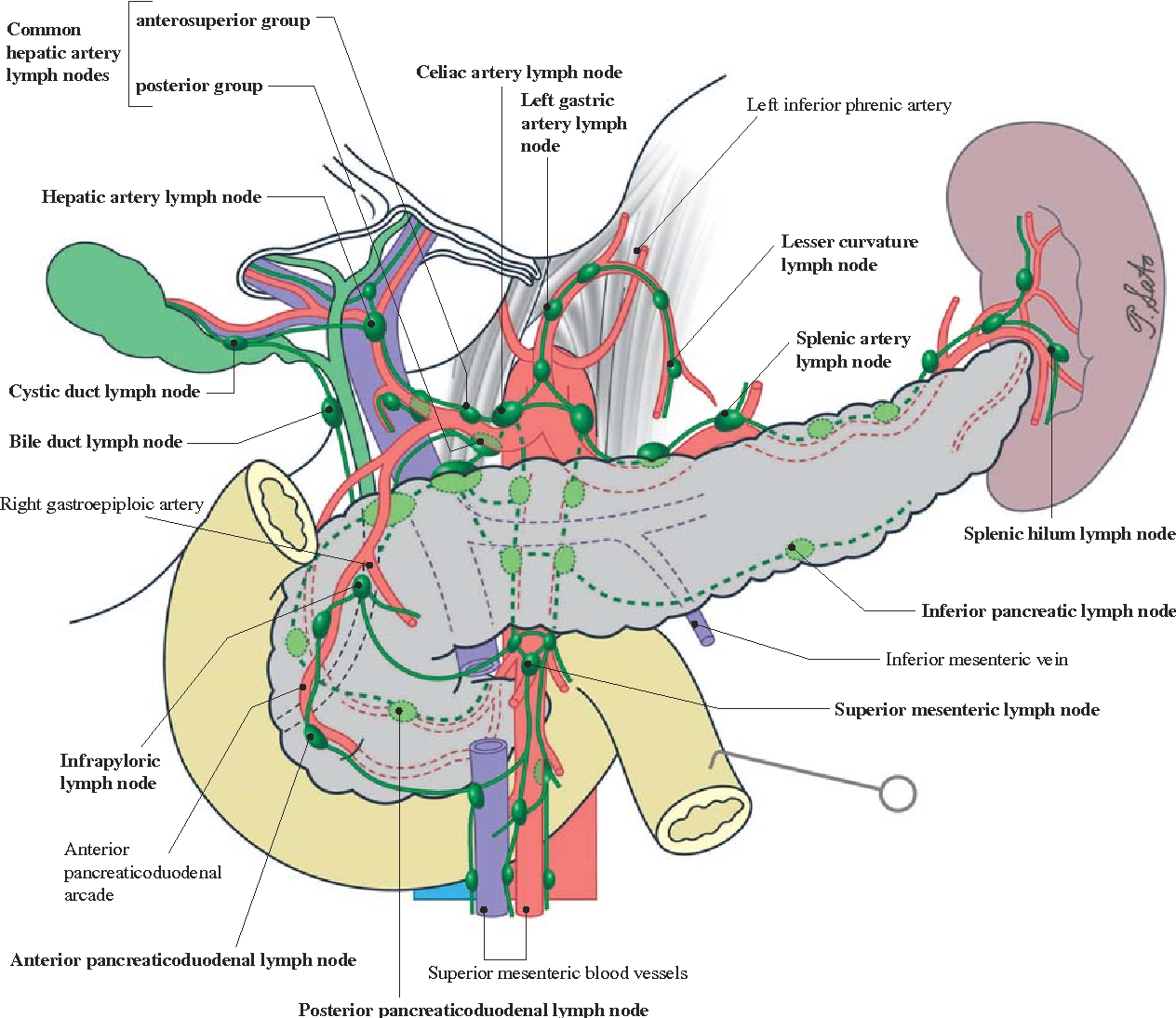
Maintaining Lymph Node Health: Preventive Measures and Lifestyle Factors
While we can’t directly control our lymph nodes, there are several lifestyle factors that can support overall lymphatic health and immune function. Incorporating these practices into daily life can help maintain a robust and effective lymphatic system.
Lifestyle Practices for Lymphatic Health
Consider adopting these habits to support your lymphatic system:
- Regular exercise: Physical activity helps stimulate lymph flow
- Proper hydration: Drinking adequate water helps maintain lymph fluid balance
- Balanced diet: Nutrient-rich foods support overall immune function
- Stress management: Chronic stress can negatively impact immune health
- Lymphatic massage: Gentle massage techniques can help stimulate lymph flow
By incorporating these practices into your routine, you can help support your body’s natural defense mechanisms and maintain overall health.
Advancements in Lymph Node Research and Treatment
The field of lymph node research is continually evolving, with new discoveries and treatment approaches emerging regularly. These advancements are improving our understanding of lymphatic function and offering new hope for patients with lymphatic disorders and related conditions.
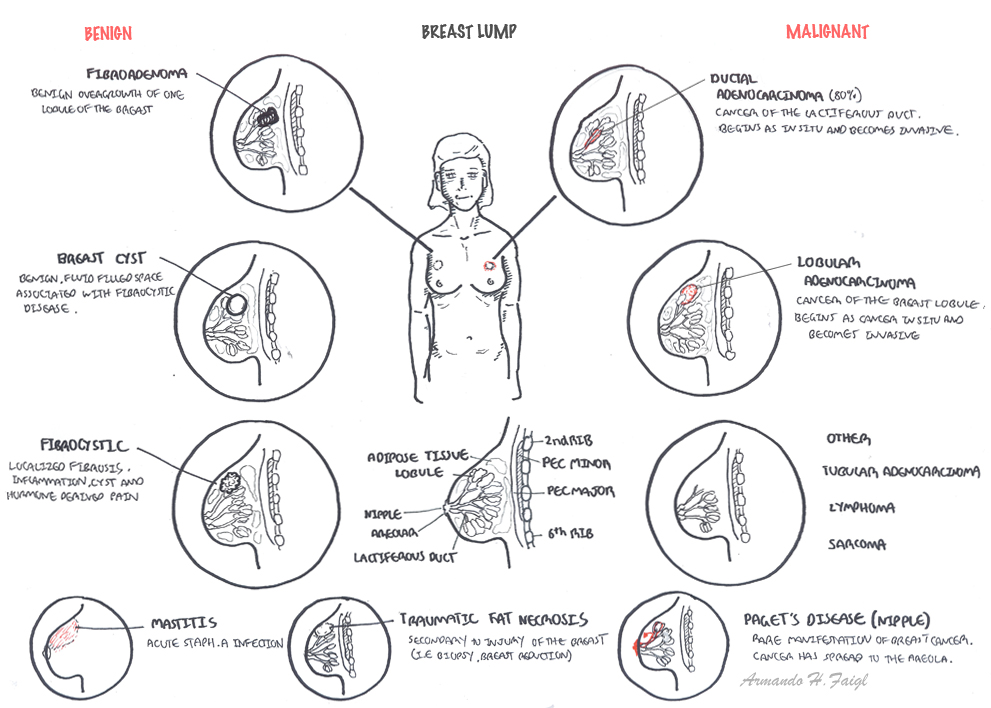
Recent Developments in Lymph Node Research
Some notable areas of recent progress include:
- Improved imaging techniques for lymph node mapping
- Development of targeted therapies for lymphoma and other lymph node cancers
- Advanced surgical techniques for lymph node preservation during cancer treatment
- Better understanding of the role of lymph nodes in autoimmune diseases
These advancements are not only improving treatment outcomes but also enhancing our ability to diagnose and manage lymphatic disorders more effectively.
Future Directions in Lymph Node Research
Looking ahead, researchers are exploring several promising avenues:
- Harnessing the power of lymph nodes for drug delivery
- Developing artificial lymph nodes for immune system support
- Investigating the role of lymph nodes in neurological diseases
- Exploring new approaches to prevent and treat lymphedema
These ongoing research efforts hold great promise for improving our understanding and treatment of lymphatic disorders in the coming years.
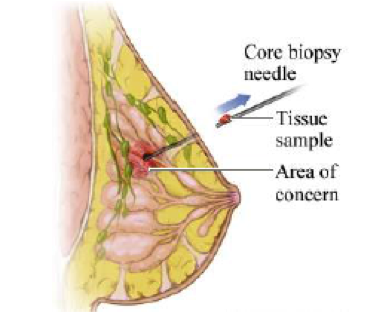
Parts of the immune system
The lymphatic system is part of the body’s immune system, which protects against infection and disease. The lymphatic system includes the spleen, thymus, lymph nodes and lymph channels, as well as the tonsils and adenoids.
Get the latest health information from Mayo Clinic’s experts.
Sign up for free, and stay up to date on research advancements, health tips and current health topics, like COVID-19, plus expertise on managing health.
Learn more about Mayo Clinic’s use of data.
To provide you with the most relevant and helpful information, and understand which
information is beneficial, we may combine your email and website usage information with
other information we have about you.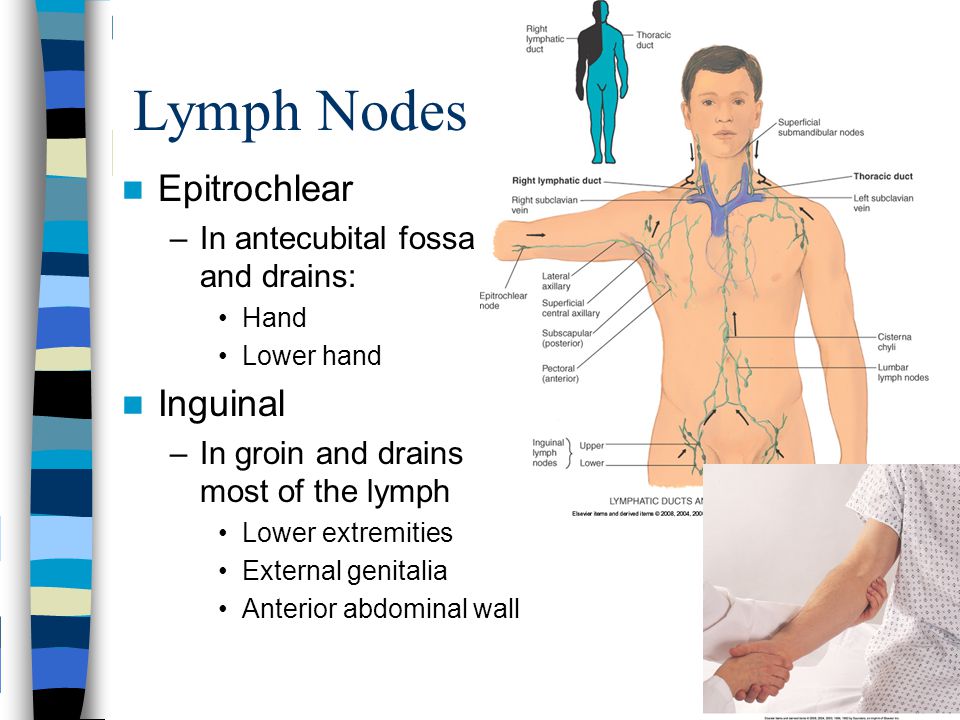 If you are a Mayo Clinic patient, this could
If you are a Mayo Clinic patient, this could
include protected health information. If we combine this information with your protected
health information, we will treat all of that information as protected health
information and will only use or disclose that information as set forth in our notice of
privacy practices. You may opt-out of email communications at any time by clicking on
the unsubscribe link in the e-mail.
Subscribe!
Thank you for subscribing
Our Housecall e-newsletter will keep you up-to-date on the latest health information.
Sorry something went wrong with your subscription
Please, try again in a couple of minutes
Retry
.
What are lymph nodes? | Cancer Council
What are lymph nodes?
Lymph nodes or lymph glands, are part of the lymphatic system which is part of both the immune and circulatory systems. The lymphatic system consists of lymph vessels, lymph fluid and lymph nodes and other lymph tissue.
Lymph nodes are small, bean-shaped structures that are found along the lymph vessels. They filter lymph fluid as it passes through your body before emptying into the bloodstream. Lymph fluid, which is normally clear, travels to and from the tissues in your body. It carries nutrients but also takes away harmful substances such as bacteria, viruses, cell debris and abnormal cells such as cancer cells. The filtered fluid is returned to your blood circulation.
Where are lymph nodes located?
There are hundreds of lymph nodes found throughout your body, including your armpits, groin, neck, between your lungs and around your gut. The lymph nodes drain lymph fluid from nearby organs or other areas of your body.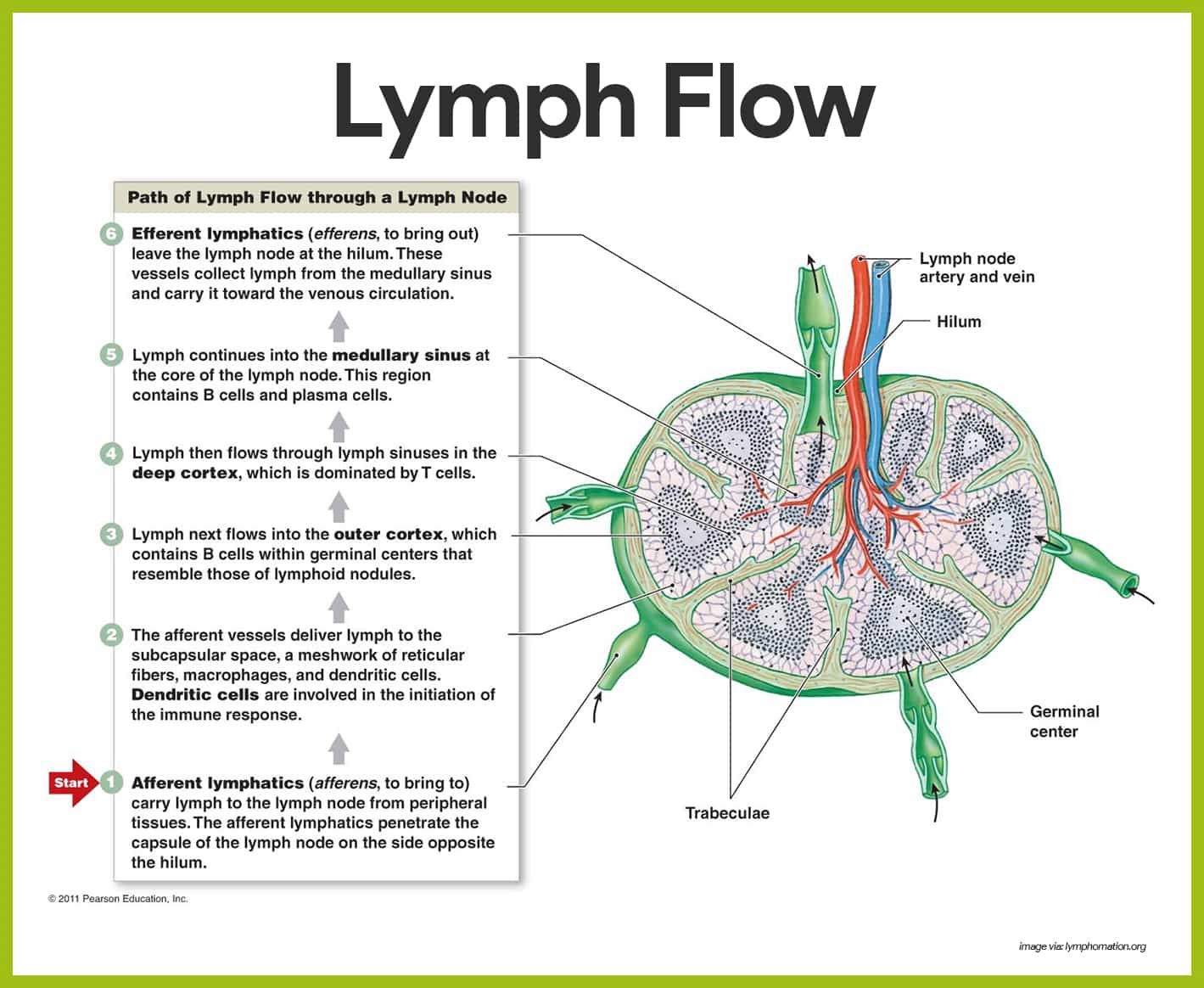
Other lymph tissue is found in other parts of your body including the thymus, tonsils, spleen and bone marrow.
How are lymph nodes affected by cancer?
Cancer can appear in the lymph nodes in two ways. It can start in the lymph nodes (lymphoma) or it can spread from where the cancer started (the primary site) elsewhere in the body such as the breast or bowel. Most commonly the cancer begins somewhere else and spreads to the lymph nodes. If you are diagnosed with cancer, your doctor will examine your lymph nodes to see if they are affected by the cancer.
Cancer or cancer treatment can block or damage the lymphatic system which may stop it from working properly. As a result, lymph fluid doesn’t drain properly and builds up in the tissues causing swelling (lymphoedema) although there are ways to reduce the risk.
For more information talk to your doctor or call Cancer Council 13 11 20.
Sources:
Understanding lymphoedema fact sheet, Cancer Council Australia © 2019.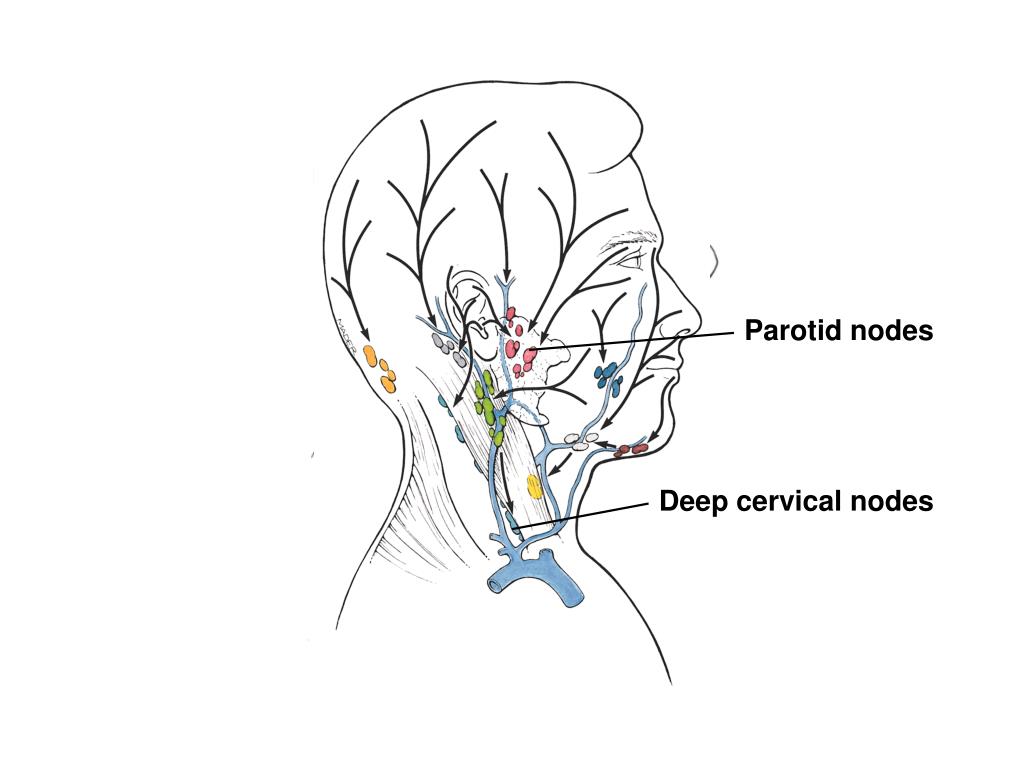 Last medical review of source booklet: July 2021.
Last medical review of source booklet: July 2021.
Health Direct, Lymph nodes
Last reviewed January 2019
The Hippocratic treatise ‘On glands’: the first document on lymphoid tissue and lymph nodes
The first document on the anatomy and physiopathology of lymphoid tissue is to be found in the Hippocratic treatise ‘On glands’ (‘Peri adenôn’).1 This short book is a milestone in the history of haematology and clinical immunology. It belongs to the Hippocratic Corpus, a collection of medical writings composed during a period of about three centuries, mostly from the fifth to the third century BC. This collection of inestimable value represents the central nucleus of ancient Greek medical literature. The date of our text is disputed.2 According to some, the treatise is not before the Hellenistic era (third century BC). According to others, it belongs to an older period, the end of the fifth or the beginning of the fourth century BC The modern scientist stands amazed before the innovative concepts expounded in this ancient medical document.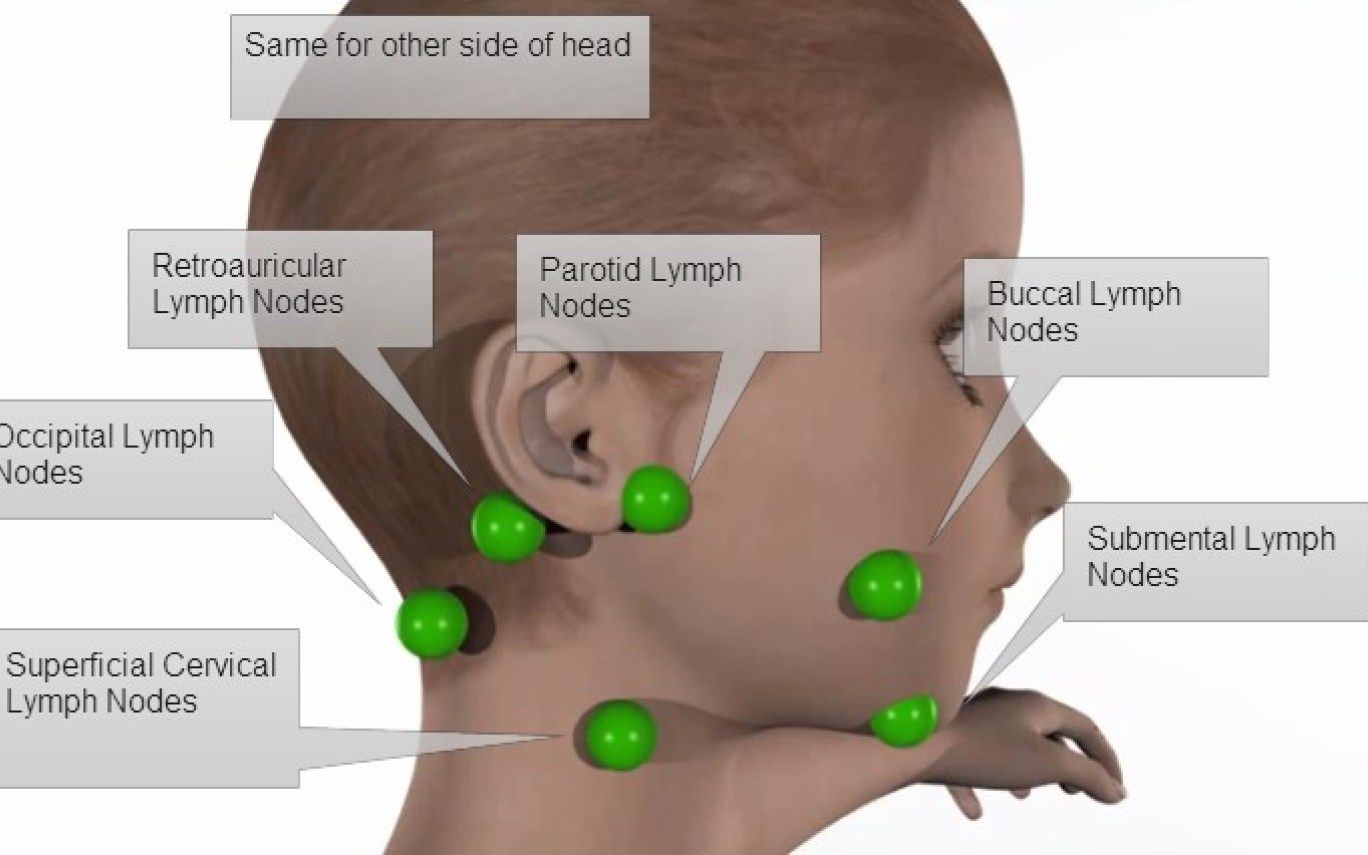 Indeed, the functional anatomy of the lymphatic system and lymph nodes emerges with impressive precision without any antecedent in the Greek medical literature. The Author identifies lymph nodes with the general term of ‘glands’ (‘adenes’) (Chapter 1). The tradition still in use to name lymph nodes with the word lymph ‘glands’ goes certainly back to this text. The Author proceeds with rigorous method from a nearly histological definition of lymph glands, via a short account on their functional significance during health and disease, to a well-ordered topographic classification. Lymph glands are described as whitish and phlegmy structures, which present a wholly consistence to the touch and can be easily squeezed by the fingers (Chapter 1). Indeed, their constitutive substance is depicted as ‘spongy, rarefied and friable’. Lymph glands possess much fat and are richly vascularized. This is the reason because they undergo significant bleeding once they are cut. Then, the Author provides an absolutely modern interpretation of their physiopathological significance.
Indeed, the functional anatomy of the lymphatic system and lymph nodes emerges with impressive precision without any antecedent in the Greek medical literature. The Author identifies lymph nodes with the general term of ‘glands’ (‘adenes’) (Chapter 1). The tradition still in use to name lymph nodes with the word lymph ‘glands’ goes certainly back to this text. The Author proceeds with rigorous method from a nearly histological definition of lymph glands, via a short account on their functional significance during health and disease, to a well-ordered topographic classification. Lymph glands are described as whitish and phlegmy structures, which present a wholly consistence to the touch and can be easily squeezed by the fingers (Chapter 1). Indeed, their constitutive substance is depicted as ‘spongy, rarefied and friable’. Lymph glands possess much fat and are richly vascularized. This is the reason because they undergo significant bleeding once they are cut. Then, the Author provides an absolutely modern interpretation of their physiopathological significance.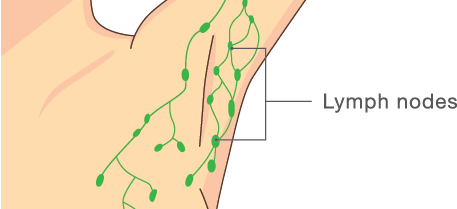 Lymph glands are said to ‘attract and receive’ fluids (Chapter 3). Indeed they receive the moisture that flows to them from different regions of the body via plentiful afferent vessels (Chapter 2). If the amount of moisture is moderate, there is no fluid accumulation in any part of the body because lymph glands drain off such liquid. By contrast, when glands are overfilled by humours, they become swollen and inflamed, and can transmit their disease to the rest of the body. They cause, for instance, the formation of tubercles accompanied by fever. In addition, lymph glands may become ill ‘in sympathy with the body’. Three fundamental concepts concerning the physiopathology of lymph nodes and lymphatic vessels come out for the first time in the medical literature. First, the lymphatic system is made up of lymphatic vessels and the glands through which they pass. Second, the drainage function of lymph glands is firmly established. Third, their involvement in inflammatory processes and systemic diseases is also foreshadowed, because it is asserted that lymph glands are subject to flogistic responses and enlargement as a consequence of either local or general affections.
Lymph glands are said to ‘attract and receive’ fluids (Chapter 3). Indeed they receive the moisture that flows to them from different regions of the body via plentiful afferent vessels (Chapter 2). If the amount of moisture is moderate, there is no fluid accumulation in any part of the body because lymph glands drain off such liquid. By contrast, when glands are overfilled by humours, they become swollen and inflamed, and can transmit their disease to the rest of the body. They cause, for instance, the formation of tubercles accompanied by fever. In addition, lymph glands may become ill ‘in sympathy with the body’. Three fundamental concepts concerning the physiopathology of lymph nodes and lymphatic vessels come out for the first time in the medical literature. First, the lymphatic system is made up of lymphatic vessels and the glands through which they pass. Second, the drainage function of lymph glands is firmly established. Third, their involvement in inflammatory processes and systemic diseases is also foreshadowed, because it is asserted that lymph glands are subject to flogistic responses and enlargement as a consequence of either local or general affections. Then, the Author proceeds by enumerating the principal gland stations. For the most part, lymph glands are situated near the great flexures of the body (Chapter 3). It is claimed that these organs are particularly numerous where there is much internal fluid to be drained and in regions rich of blood vessels, whereas they lack where the body is dry. This is indeed a skilful observation insofar as lymphatics can be recognized in nearly all tissues and organs, which contain blood vessels. Such non-vascular structures as cartilage, nails, hair and cornea have none. In the head – maintains the Hippocratic Author – glands are scattered around the ears and near the jugular vessels of the neck. These are indeed the posterior and pre-auricular lymph nodes, and the superficial and deep cervical lymph nodes, respectively. Glands are said to be numerous in the axillary and inguinal flexures, the axillary and inguinal lymph nodes of modern nomenclature. Remarkably, the intestinal glands are also mentioned (Chapter 5).
Then, the Author proceeds by enumerating the principal gland stations. For the most part, lymph glands are situated near the great flexures of the body (Chapter 3). It is claimed that these organs are particularly numerous where there is much internal fluid to be drained and in regions rich of blood vessels, whereas they lack where the body is dry. This is indeed a skilful observation insofar as lymphatics can be recognized in nearly all tissues and organs, which contain blood vessels. Such non-vascular structures as cartilage, nails, hair and cornea have none. In the head – maintains the Hippocratic Author – glands are scattered around the ears and near the jugular vessels of the neck. These are indeed the posterior and pre-auricular lymph nodes, and the superficial and deep cervical lymph nodes, respectively. Glands are said to be numerous in the axillary and inguinal flexures, the axillary and inguinal lymph nodes of modern nomenclature. Remarkably, the intestinal glands are also mentioned (Chapter 5).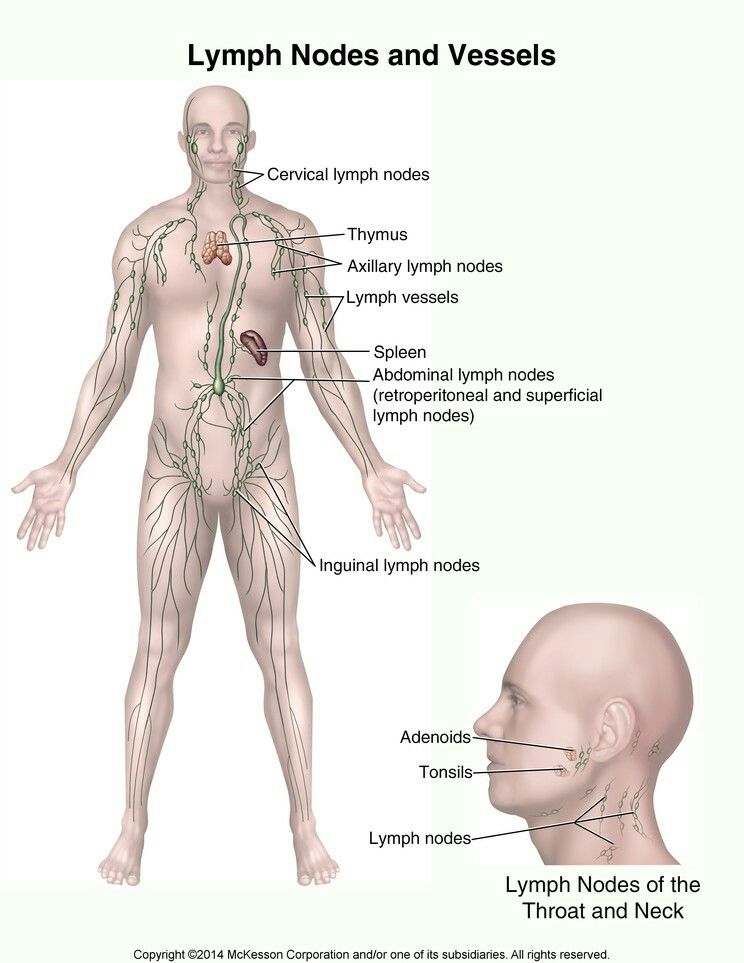 They are described as quite large, very numerous and placed to the omentum. Here, the Author provides a fascinating explanation as to the drainage mechanism of intestinal glands. The fluid produced by the bowel is firstly absorbed by the omentum and then passes into mesenteric glands. Of course, this implies the existence of small, hollow channels running through the mesenteric folds – the lacteal or chyliferous vessels – and bearing the intestinal lymph to the lymph nodes scattered in the mesentery. There are also glands near the kidneys (Chapter 6). These glands are larger than the other glands. Here, the Author is likely mentioning the aortic lymph nodes, which are very large indeed. At last, the Author describes the glands of the throat, which are called ‘paraisthmia’ (Chapter 7). These are located to the isthmus of the fauces on both sides and are to be interpreted as the palatine tonsils. As a matter of fact, this book does not mention the spleen and the thymus among lymphoid organs.
They are described as quite large, very numerous and placed to the omentum. Here, the Author provides a fascinating explanation as to the drainage mechanism of intestinal glands. The fluid produced by the bowel is firstly absorbed by the omentum and then passes into mesenteric glands. Of course, this implies the existence of small, hollow channels running through the mesenteric folds – the lacteal or chyliferous vessels – and bearing the intestinal lymph to the lymph nodes scattered in the mesentery. There are also glands near the kidneys (Chapter 6). These glands are larger than the other glands. Here, the Author is likely mentioning the aortic lymph nodes, which are very large indeed. At last, the Author describes the glands of the throat, which are called ‘paraisthmia’ (Chapter 7). These are located to the isthmus of the fauces on both sides and are to be interpreted as the palatine tonsils. As a matter of fact, this book does not mention the spleen and the thymus among lymphoid organs.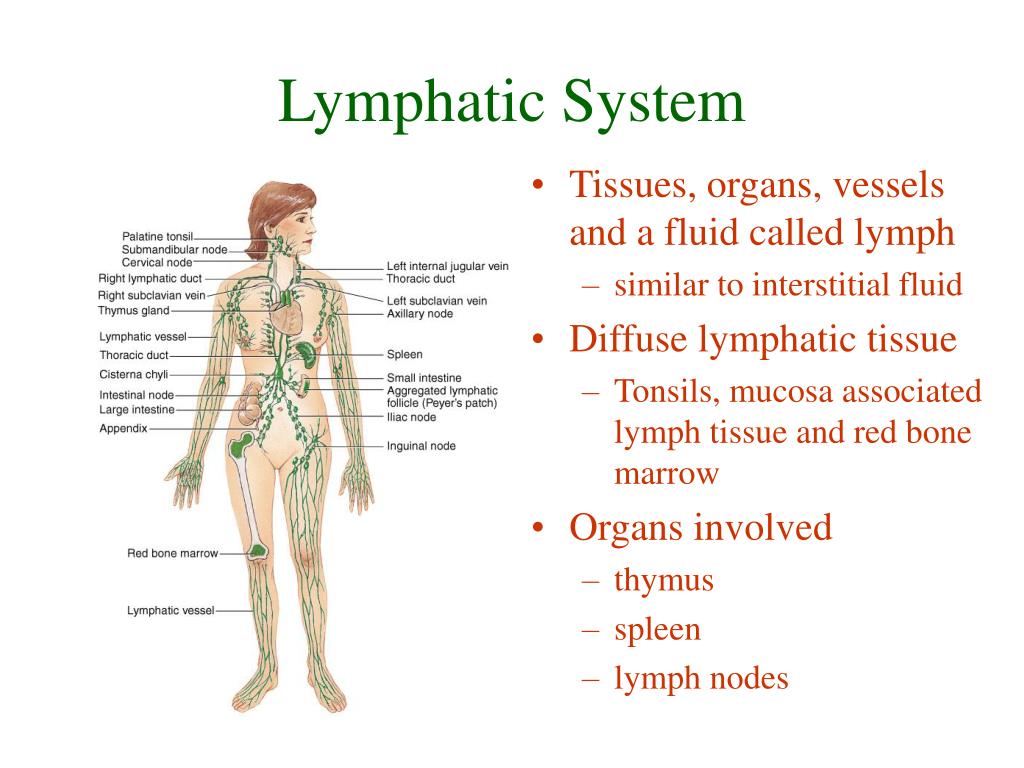 Other Hippocratic treatises, however, provide information about the spleen, in particular about spleen enlargements in acute or chronic pathological conditions. Remarkably, the words used to describe its structure are almost identical to those utilized to depict lymph glands. In ‘Ancient medicine’, for instance, a Hippocratic text dating from the end of the fifth century BC, the spleen is referred to as ‘soft and spongy’ (Chapter 22).3 Its texture is rich of ‘porous hollows’. Thus, the spleen easily ‘draws and attracts’ fluids, and is subject to become swollen and to harden as a consequence of general feverish conditions. Enlargement of the spleen as a result of fever is also reported in the fourth century Hippocratic treatise ‘Places in man’.4 Here, the Author maintains that it is ‘one and the same pathological process that makes both the spleen swell and the body waste’ (Chapter 24). Some details of the spleen’s gross anatomy are also provided. The organ is described as an abdominal structure that is connected to the abdominal wall by the omentum (Chapter 3).
Other Hippocratic treatises, however, provide information about the spleen, in particular about spleen enlargements in acute or chronic pathological conditions. Remarkably, the words used to describe its structure are almost identical to those utilized to depict lymph glands. In ‘Ancient medicine’, for instance, a Hippocratic text dating from the end of the fifth century BC, the spleen is referred to as ‘soft and spongy’ (Chapter 22).3 Its texture is rich of ‘porous hollows’. Thus, the spleen easily ‘draws and attracts’ fluids, and is subject to become swollen and to harden as a consequence of general feverish conditions. Enlargement of the spleen as a result of fever is also reported in the fourth century Hippocratic treatise ‘Places in man’.4 Here, the Author maintains that it is ‘one and the same pathological process that makes both the spleen swell and the body waste’ (Chapter 24). Some details of the spleen’s gross anatomy are also provided. The organ is described as an abdominal structure that is connected to the abdominal wall by the omentum (Chapter 3).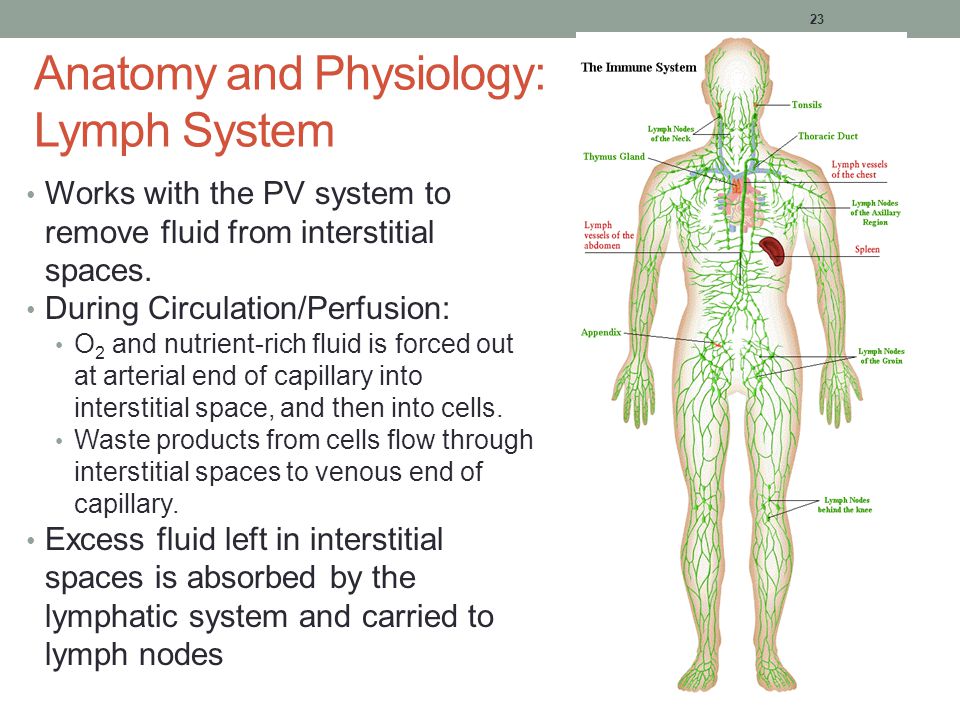 As to the thymus, it will be first described by Galen of Pergamon (129-about 216) various centuries later as a ‘loose, rarefied flesh’ composed by two horns, localized deeply to the sternum, close to the heart and the bifurcation of the great vein (superior vena cava). Remarkably, Galen made the truthful observation that the thymus reaches its greatest size during the first years of life and then progressively disappears.5
As to the thymus, it will be first described by Galen of Pergamon (129-about 216) various centuries later as a ‘loose, rarefied flesh’ composed by two horns, localized deeply to the sternum, close to the heart and the bifurcation of the great vein (superior vena cava). Remarkably, Galen made the truthful observation that the thymus reaches its greatest size during the first years of life and then progressively disappears.5
‘On glands’ is a great book. Its Author should be recognized as a far-seeing pioneer in haematology and medical sciences. He shaped some basic concepts, which represent still common wisdom in today’s medical reasoning.
Swollen Lymph Nodes | Frankel Cardiovascular Center
Topic Overview
What are lymph nodes?
Lymph nodes are small, bean-shaped glands throughout the body. They are part of the lymph system, which carries fluid (lymph fluid), nutrients, and waste material between the body tissues and the bloodstream.
The lymph system is an important part of the immune system, the body’s defense system against disease.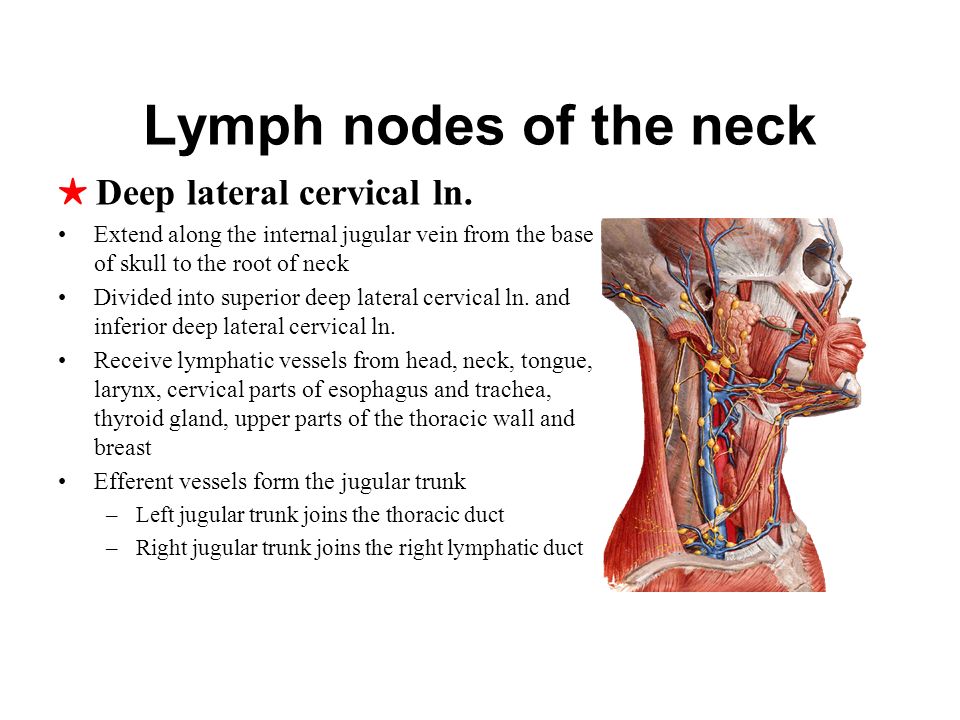 The lymph nodes filter lymph fluid as it flows through them, trapping bacteria, viruses, and other foreign substances, which are then destroyed by special white blood cells called lymphocytes.
The lymph nodes filter lymph fluid as it flows through them, trapping bacteria, viruses, and other foreign substances, which are then destroyed by special white blood cells called lymphocytes.
Lymph nodes may be found singly or in groups. And they may be as small as the head of a pin or as large as an olive. Groups of lymph nodes can be felt in the neck, groin, and underarms. Lymph nodes generally are not tender or painful. Most lymph nodes in the body cannot be felt.
What causes swollen lymph nodes?
Lymph nodes often swell in one location when a problem such as an injury, infection, or tumor develops in or near the lymph node. Which lymph nodes are swollen can help identify the problem.
- The glands on either side of the neck, under the jaw, or behind the ears commonly swell when you have a cold or sore throat. Glands can also swell following an injury, such as a cut or bite, near the gland or when a tumor or infection occurs in the mouth, head, or neck.

- Glands in the armpit (axillary lymph nodes) may swell from an injury or infection to the arm or hand. A rare cause of axillary swelling may be breast cancer or lymphoma.
- The lymph nodes in the groin (femoral or inguinal lymph nodes) may swell from an injury or infection in the foot, leg, groin, or genitals. In rare cases, testicular cancer, lymphoma, or melanoma may cause a lump in this area.
- Glands above the collarbone (supraclavicular lymph nodes) may swell from an infection or tumor in the areas of the lungs, breasts, neck, or abdomen.
Common sites for swollen lymph nodes include the neck, groin, and underarms.
What does it mean when lymph nodes swell in two or more areas of the body?
When lymph nodes swell in two or more areas of the body, it is called generalized lymphadenopathy. This may be caused by:
- A viral illness, such as measles, rubella, chickenpox (varicella), or mumps.
- Mononucleosis(Epstein-Barr virus), which results in fever, sore throat, and fatigue, or cytomegalovirus (CMV), a viral infection that causes symptoms similar to those of mononucleosis.

- A bacterial illness, such as strep throat (caused by the streptococcus bacterium) or Lyme disease (a bacterial infection spread by certain types of ticks).
- Side effects of phenytoin (Dilantin), a medicine used to prevent seizures.
- Side effects of measles-mumps-rubella (MMR) vaccination.
- Cancer, such as leukemia, Hodgkin disease, and non-Hodgkin lymphoma.
- Acquired immunodeficiency syndrome (AIDS), which develops after a person contracts HIV (human immunodeficiency virus). This virus attacks the immune system, making it difficult for the body to fight off infection and some disease.
- Syphilis, a sexually transmitted infection.
How are swollen lymph nodes treated?
Treatment for swollen glands focuses on treating the cause. For example, a bacterial infection may be treated with antibiotics, while a viral infection often goes away on its own. If cancer is suspected, a biopsy may be done to confirm the diagnosis.
Any swollen lymph nodes that don’t go away or return to normal size within about a month should be checked by your doctor.
How long will lymph nodes remain swollen?
Lymph nodes may remain swollen or firm long after an initial infection is gone. This is especially true in children, whose glands may decrease in size while remaining firm and visible for many weeks.
Swollen lymph nodes // Middlesex Health
Overview
Swollen lymph nodes usually occur as a result of infection from bacteria or viruses. Rarely, swollen lymph nodes are caused by cancer.
Your lymph nodes, also called lymph glands, play a vital role in your body’s ability to fight off infections. They function as filters, trapping viruses, bacteria and other causes of illnesses before they can infect other parts of your body. Common areas where you might notice swollen lymph nodes include your neck, under your chin, in your armpits and in your groin.
In some cases, the passage of time and warm compresses may be all you need to treat swollen lymph nodes. If an infection causes swollen lymph nodes, treatment depends on the cause.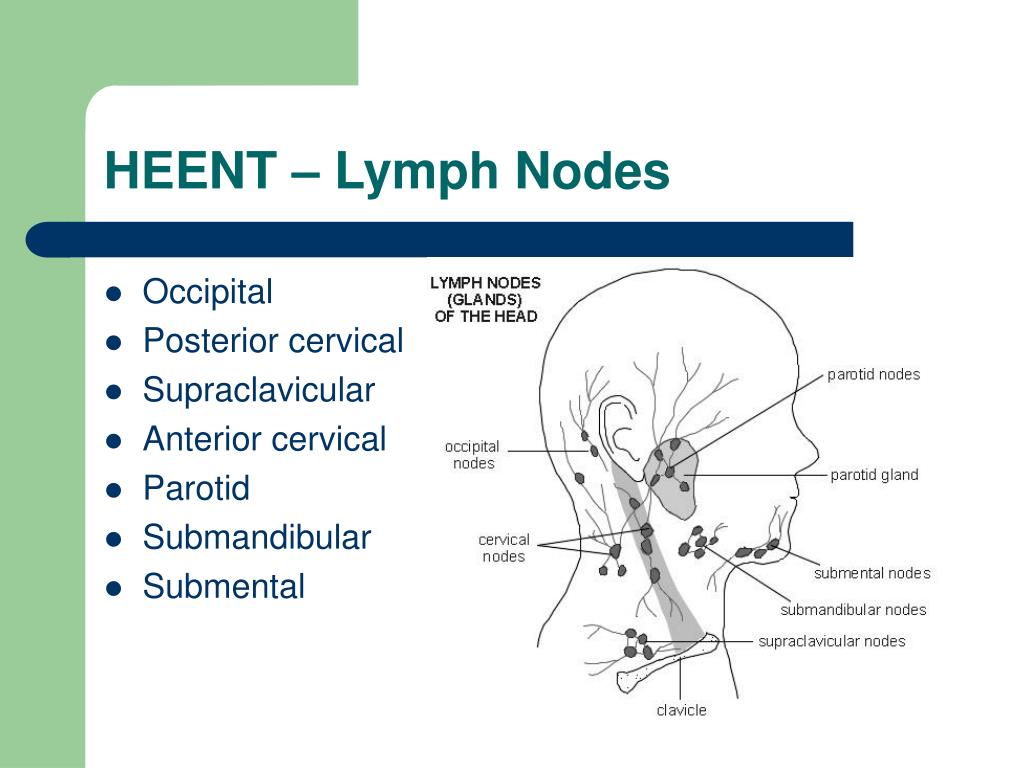
One of the most common places to find swollen lymph nodes is in the neck. The inset shows three swollen lymph nodes below the lower jaw.
Symptoms
Your lymphatic system is a network of organs, vessels and lymph nodes situated throughout your body. Many lymph nodes are located in your head and neck region. Lymph nodes that frequently swell are in this area, as well as in your armpits and groin area.
Swollen lymph nodes are a sign that something is wrong somewhere in your body. When your lymph nodes first swell, you might notice:
- Tenderness and pain in the lymph nodes
- Swelling that may be the size of a pea or kidney bean, or even larger in the lymph nodes
Depending on the cause of your swollen lymph nodes, other signs and symptoms you might have include:
- Runny nose, sore throat, fever and other indications of an upper respiratory infection
- General swelling of lymph nodes throughout your body.
 When this occurs, it may indicate an infection, such as HIV or mononucleosis, or an immune system disorder, such as lupus or rheumatoid arthritis
When this occurs, it may indicate an infection, such as HIV or mononucleosis, or an immune system disorder, such as lupus or rheumatoid arthritis - Hard, fixed, rapidly growing nodes, indicating a possible cancer or lymphoma
- Fever
- Night sweats
When to see a doctor
Some swollen lymph nodes return to normal when the underlying condition, such as a minor infection, gets better. See your doctor if you’re concerned or if your swollen lymph nodes:
- Have appeared for no apparent reason
- Continue to enlarge or have been present for two to four weeks
- Feel hard or rubbery, or don’t move when you push on them
- Are accompanied by persistent fever, night sweats or unexplained weight loss
Seek immediate medical care if you’re having difficulty swallowing or breathing.
Causes
Lymph nodes are small, round or bean-shaped clusters of cells. Inside lymph nodes are a combination of different types of immune system cells. These specialized cells filter your lymphatic fluid as it travels through your body and protect you by destroying invaders.
Inside lymph nodes are a combination of different types of immune system cells. These specialized cells filter your lymphatic fluid as it travels through your body and protect you by destroying invaders.
Lymph nodes are located in groups, and each group drains a specific area of your body. You may be more likely to notice swelling in certain areas, such as in the lymph nodes in your neck, under your chin, in your armpits and in your groin. The site of the swollen lymph nodes may help identify the underlying cause.
The most common cause of swollen lymph nodes is an infection, particularly a viral infection, such as the common cold. Other possible causes of swollen lymph nodes include:
Common infections
- Strep throat
- Measles
- Ear infections
- Infected (abscessed) tooth
- Mononucleosis
- Skin or wound infections, such as cellulitis
- Human immunodeficiency virus (HIV) — the virus that causes AIDS
Uncommon infections
- Tuberculosis
- Certain sexually transmitted infections, such as syphilis
- Toxoplasmosis — a parasitic infection resulting from contact with the feces of an infected cat or eating undercooked meat
- Cat scratch fever — a bacterial infection from a cat scratch or bite
Immune system disorders
- Lupus — a chronic inflammatory disease that targets your joints, skin, kidneys, blood cells, heart and lungs
- Rheumatoid arthritis — a chronic inflammatory disease targeting the tissue that lines your joints (synovium)
Cancers
- Lymphoma — cancer that originates in your lymphatic system
- Leukemia — cancer of your body’s blood-forming tissue, including your bone marrow and lymphatic system
- Other cancers that have spread (metastasized) to lymph nodes
Other possible but rare causes include certain medications, such as the anti-seizure medication phenytoin (Dilantin) and preventive medications for malaria.
The lymphatic system is part of the body’s immune system, which protects against infection and disease. The lymphatic system includes the spleen, thymus, lymph nodes and lymph channels, as well as the tonsils and adenoids.
Complications
If infection is the cause of your swollen lymph nodes and isn’t treated, an abscess may form. Abscesses are localized collections of pus caused by infections. Pus contains fluid, white blood cells, dead tissue, and bacteria or other invaders. An abscess may require drainage and antibiotic treatment.
Diagnosis
To diagnose what might be causing your swollen lymph nodes, your doctor may need:
- Your medical history. Your doctor will want to know when and how your swollen lymph nodes developed and if you have any other signs or symptoms.
- A physical exam. Your doctor will also want to check lymph nodes near the surface of your skin for size, tenderness, warmth and texture.
 The site of your swollen lymph nodes and your other signs and symptoms will offer clues to the underlying cause.
The site of your swollen lymph nodes and your other signs and symptoms will offer clues to the underlying cause. - Blood tests. Certain blood tests may help confirm or exclude any suspected underlying conditions. The specific tests will depend on the suspected cause, but most likely will include a complete blood count (CBC). This test helps evaluate your overall health and detect a range of disorders, including infections and leukemia.
- Imaging studies. A chest X-ray or computerized tomography (CT) scan of the affected area may help determine potential sources of infection or find tumors.
- Lymph node biopsy. Your doctor may have you undergo a biopsy to secure the diagnosis. He or she will remove a sample from a lymph node or even an entire lymph node for microscopic examination.
Treatment
Swollen lymph nodes caused by a virus usually return to normal after the viral infection resolves. Antibiotics are not useful to treat viral infections.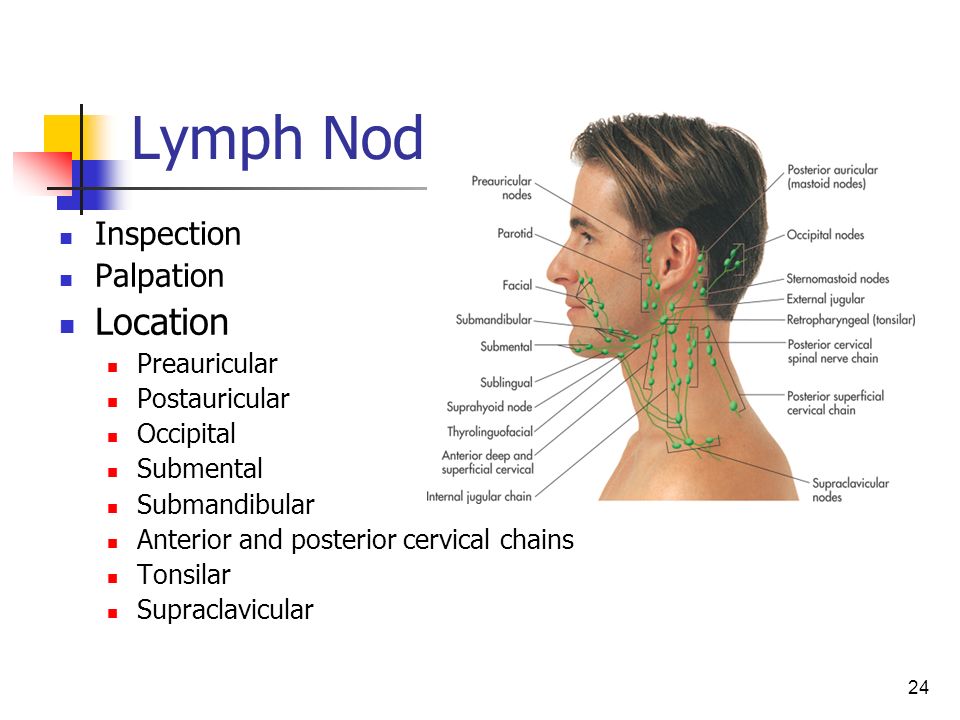 Treatment for swollen lymph nodes from other causes depends on the cause:
Treatment for swollen lymph nodes from other causes depends on the cause:
- Infection. The most common treatment for swollen lymph nodes caused by a bacterial infection is antibiotics. If your swollen lymph nodes are due to an HIV infection, you’ll receive specific treatment for that condition.
- Immune disorder. If your swollen lymph nodes are a result of certain conditions, such as lupus or rheumatoid arthritis, treatment is directed at the underlying condition.
- Cancer. Swollen nodes caused by cancer require treatment for the cancer. Depending on the type of cancer, treatment may involve surgery, radiation or chemotherapy.
Lifestyle and home remedies
If your swollen lymph nodes are tender or painful, you might get some relief by doing the following:
- Apply a warm compress. Apply a warm, wet compress, such as a washcloth dipped in hot water and wrung out, to the affected area.

- Take an over-the-counter pain reliever. These include aspirin, ibuprofen (Advil, Motrin, others), naproxen (Aleve) or acetaminophen (Tylenol, others). Use caution when giving aspirin to children or teenagers. Though aspirin is approved for use in children older than age 2, children and teenagers recovering from chickenpox or flu-like symptoms should never take aspirin. Talk to your doctor if you have concerns.
- Get adequate rest. You often need rest to aid your recovery from the underlying condition.
Preparing for an appointment
If you have swollen lymph nodes, you’re likely to start by first seeing your family doctor. When you call to set up your appointment, you may be urged to seek immediate medical care if you’re experiencing severe symptoms such as difficulty breathing or swallowing.
Here’s some information to help you get ready for your appointment.
What you can do
- Be aware of any pre-appointment restrictions.
 At the time you make the appointment, ask if you need to do anything in advance.
At the time you make the appointment, ask if you need to do anything in advance. - List any symptoms you’ve been experiencing, and for how long. Among other symptoms, your doctor will want to know if you’ve had flu-like symptoms, such as a fever or sore throat, and may ask whether you’ve noticed changes in your weight. Include on your list every symptom, from mild to severe, that you’ve noticed since your lymph nodes began to swell.
- Make a list of all recent exposures to possible sources of infection. These may include travel abroad, hiking in areas known to have ticks, eating undercooked meat, being scratched by a cat, or engaging in high-risk sexual behavior or sex with a new partner.
- Make a list of your key medical information, including other conditions you’re being treated for and the names of the medications that you’re taking. Include every prescription and over-the-counter (OTC) drug you use, as well as any vitamins and supplements.

- List questions to ask your doctor.
For swollen lymph nodes, some basic questions to ask your doctor include:
- What’s causing my symptoms?
- What are other possible causes for my symptoms?
- What kinds of tests do I need?
- What treatment do you recommend?
- How quickly will I start to feel better?
- Am I contagious? How can I reduce the risk of infecting others?
- How can I prevent this from happening in the future?
- I have these other health conditions. Do I need to change the treatments I’ve been using?
- Is there a generic alternative to the medicine you’re prescribing for me?
- Do you have any brochures or other printed material that I can take with me? What websites do you recommend?
What to expect from your doctor
Your doctor is likely to ask you a number of questions, such as:
- What are your symptoms?
- When did you first begin experiencing symptoms?
- Have your affected lymph nodes gotten larger over time?
- Are your affected lymph nodes tender?
- Have you been experiencing a fever or night sweats?
- Have you lost weight without trying?
- Do you have a sore throat or difficulty swallowing?
- Have you experienced any difficulty breathing?
- Have your bowel habits changed?
- What medications are you currently taking?
- Have you recently traveled to another country or to tick-inhabited regions? Did anyone who traveled with you get sick?
- Have you recently been exposed to new animals? Were you bitten or scratched?
- Have you recently had sex with a new partner?
- Do you practice safe sex? Have you done so since you became sexually active?
- Do you smoke? For how long?
What you can do in the meantime
While you wait for your appointment, if your swollen nodes are painful, try easing your discomfort by using warm compresses and an OTC pain reliever, such as ibuprofen (Advil, Motrin IB, others) or acetaminophen (Tylenol, others).
©1998-2021 Mayo Foundation for Medical Education and Research (MFMER). All rights reserved. Terms of Use
Cancer in the Lymph Glands: Risk Factors, Symptoms & Treatments
Medically Reviewed by Sreenivas V. Rao, MD
Lymphoma represents one category of cancer cells that can be effectively treated with chemotherapy. The treatment of lymphomas has markedly improved due to the addition of antibodies targeted against the lymphoma cells.
Lymphoma is a cancer of the lymph glands and there are many kinds of lymphomas. Their course varies with some growing very slowly and others progressing very rapidly.
RISK FACTORS
Most lymphomas occur spontaneously, but there are certain populations at higher risk for lymphoma. Lymphomas are more likely to affect patients with autoimmune conditions such as rheumatoid arthritis and Sjogren’s disease or patients who have organ transplants. Patients with viral exposure such as Hepatitis C and HIV are also more prone to develop lymphoma.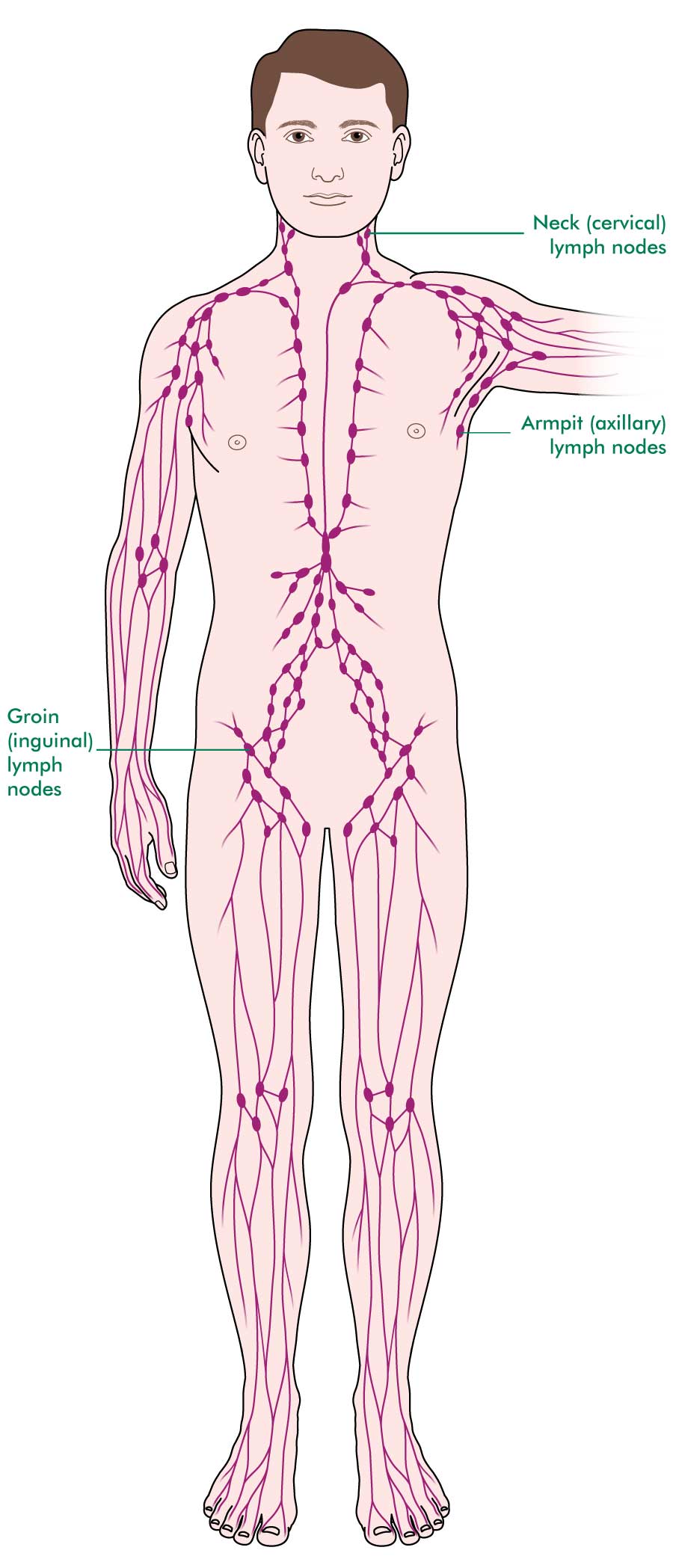 Additionally, some research shows a connection between environmental exposures and lymphoma and there have been associations noted with toxins and chemicals in herbicides.
Additionally, some research shows a connection between environmental exposures and lymphoma and there have been associations noted with toxins and chemicals in herbicides.
LYMPHOMA SYMPTOMS
Common symptoms of lymphoma are enlarged lymph glands. A person might notice swelling in the neck, armpit or even in the groin. During a medical exam, a physician can check these areas and discover the lymph node enlargement. However, there can be swollen lymph nodes all over the body including inside the abdominal cavity and the chest that we can usually not find on a physical exam. The other prominent symptoms of lymphoma are weight loss without a clear cause, unexplained chills or fever or drenching night sweats. These symptoms are collectively called the B-symptoms.
IS AGE A FACTOR?
We tend to see lymphoma in all age groups. We see some types of lymphoma in the younger adult age group, but the elderly population can also be affected especially with Non-Hodgkin’s lymphoma.
HAVE A QUESTION?
Ask a Cancer Specialist.
Understanding How Lymph Nodes Respond To Infection May Redefine How Immune System Functions — ScienceDaily
DURHAM, N.C. — Duke University Medical Center researchers may have solved the mystery of why lymph nodes swell when the body fights infection. Their findings may redefine how the immune system functions, they said.
Their research, published in the December 2003 issue of Nature Immunology, centered on the role of mast cells. Mast cells are immune cells that are typically found just under the skin and in the lining of the intestine and lungs and were previously associated primarily with the induction of allergic reactions. The Duke researchers report that allergic reactions are only a side effect of mast cells’ much more important role as a regulator of the body’s immune system.
“Mast cells serve as the command post for the immune system during infections,” said Soman Abraham, Ph.D., professor of pathology, associate professor of immunology and senior author of the paper. “White blood cells are sequestered within these nodes and, following proper activation, they can specifically target infectious agents and aid the host in clearing unwanted pathogens.”
Abraham said the discovery that mast cells can initiate the activation and swelling of nodes through release of specific signaling molecules points to the possible use of mast cell products for the development of vaccines designed to boost the potency of the immune response.
“Mast cells have been much maligned because of their contribution to many diseases including asthma, arthritis, Crohn’s disease and multiple sclerosis,” said Abraham. “Our research shows that mast cells play an important role in immune surveillance and defense against infectious agents.”
The human immune system comprises two components that protect it against invading pathogens. The first line of defense is the innate immune system, a quick-acting response triggered immediately when a pathogen enters the body. The innate immune response responds the same regardless of the pathogen and attacks the pathogen for the first several days until the adaptive immune response can begin its attack.
The adaptive immune system is tailored specifically to the pathogen it is attacking. Once the immune system identifies an invader, draining lymph nodes recruit infection-fighting T-cells within 24 hours. During the next week or so, the T-cells proliferate and induce B-cells to produce antibodies specific to the invader. The result is swollen lymph nodes, which are the first discernable sign that the adaptive immune system is in effect.
Previous studies by Abraham showed that mast cells trigger the body’s innate immune system by releasing a molecule called tumor necrosis factor (TNF) and recruiting infection-clearing cells called neutrophils. However, the role of mast cells in the adaptive immune system remained unknown.
To examine the role of mast cells in the adaptive immune system, the Duke researchers studied the lymph nodes of mast cell-deficient mice. When the scientists introduced bacteria into the animals, their lymph nodes did not swell. However, when the mice were injected with mast cells, their nodes did swell. Further, specific activation of mast cells in the skin induced a rapid increase in TNF in the lymph nodes and recruitment of T cells.
“We are showing that the mast cells are critically involved in both the innate and adaptive immune systems,” said Abraham. “Both are triggered with the release of TNF by the mast cells. The innate immune system, through TNF and neutrophils, attack the pathogen first, but within hours, TNF has reached the lymph nodes, triggering the adaptive immune system. Infection fighting T-cells are recruited and a specific attack on the pathogen begins. Within days, the body is producing antibodies and fighting back.”
The involvement of mast cells in the adaptive response is a major shift in the understanding of the immune system and its function, said Salvatore Pizzo, M.D., Ph.D., chairman of the department of pathology and a member of the research team.
“When you pick up a textbook two years from now that shows how the immune system functions and the way a node responds to an infectious agent, you are going to see a whole new pathway,” said Pizzo. “Mast cells are much more than just bad actors making you feel sick when you are exposed to noxious agents. They are actually major players helping you deal with these noxious agents.”
“With a clearer understanding of the adaptive immune system and the role of mast cells, comes the opportunity for new therapeutics that could improve disease protection,” said Abraham.
“It’s been known, particularly with allergy and asthma, that mast cells are involved in immune dysfunction,” he said. “But their real physiological role is triggering both the innate and adaptive immune systems. Future research needs to focus on this role. We need to continue to dissect the process and adapt some of it to improve immunity and disease protection.”
The National Institutes of Health and the Sandler Foundation for Asthma Research funded the research. Co-authors of the paper include James B. McLachlan; Justin P. Hart, Ph.D.; Christopher P. Shelburne, Ph.D.; Herman F. Staats, Ph.D.; and Michael D. Gunn, M.D., all of Duke University Medical Center.
Belarusian State Medical University
1.
Internal iliac lymph nodes
, nodi lymphatici iliaci interni . They are located along the internal iliac artery and collect lymph from the pelvic organs, perineum, as well as the walls of the pelvis. The efferent vessels end in the common iliac lymph nodes.
2.
Superior gluteal lymph nodes
, nodi lymphatici gluteales superiores . They are located along the superior gluteal artery and collect lymph from the walls of the pelvis.Rice. A.
3.
Lower gluteal lymph nodes
, nodi lymphatici gluteales inferiores . Localized along the inferior gluteal artery. Collect lymph from the prostate gland, the proximal part of the urethra. Figure A.
4.
Sacral lymph nodes
, nodi lymphatici sacrales . Located on the pelvic surface of the sacrum. Collect lymph from the prostate gland. Rice. A.
5.
TAZ: VISCERAL LYMPH NODES
, pelvis: nodi lymphatici viscerales .
6.
Peri-vesical lymph nodes
, nodi lymphatici paravesiculares . Collect lymph from the bladder and prostate gland. Rice. A.
7.
Pre-bladder lymph nodes
, nodi lymphatici prevesiculares . They lie between the bladder and the pubic symphysis. Rice. A.
eight.
Urinary lymph nodes
, nodi lymphatici postvesiculares . Located behind the bladder. Rice. A.
nine.
Lateral urinary lymph nodes
, nodi lymphatici vesiculares laterales .Localized in the lower part of the medial umbilical ligament. Rice. A.
ten.
Peromatous lymph nodes
, nodi lymphatici parauterini . They are located near the uterus and collect lymph from the cervix uteri. Rice. A.
eleven.
Perivaginal lymph nodes
, nodi lymphatici paravaginales . Located near the vagina, from which lymph is collected. Rice. A.
12.
Peri-rectal (anorectal) lymph nodes
, nodi lymphatici pararectales (anorectales) .Located on the surface of the muscular layer of the rectum, they collect lymph from its wall, as well as from the vagina. Rice. A.
13.
LOWER LIMB
, membrum inferius .
14.
Superficial inguinal lymph nodes
, nodi lymphatici inguina les superficiales . Located in the subcutaneous tissue on the fascia lata, they collect lymph from the anus, external genital organs, perineum, abdominal wall and from the lower limb.The outflow vessels of the superficial inguinal nodes end in nodi lymphatici iliaci externi.
15.
Upper medial superficial inguinal lymph nodes
, nodi lymphatici inguinales superficiales superomediales . They lie along the groin ligament, closer to its middle. Rice. B.
16.
Upper-lateral superficial inguinal lymph nodes
, nodi lymphatici inguinales superficiales superolaterales . Located below the inguinal ligament, closer to its lateral end.Rice. B.
17.
Lower superficial inguinal lymph nodes
, nodi lymphatici inguinales superficiales inferiores . They are located along a vertical line that is a continuation of the proximal end of the great saphenous vein. They end in the superficial lymphatic vessels of the lower extremity. Rice. B.
eighteen.
Deep inguinal lymph nodes
, nodi lymphatici inguinales profundi . Located under the fascia lata at the level of the subcutaneous fissure. The top node of this group (Rosenmüller’s node) is usually located in the area of the femoral ring.Deep inguinal nodes collect lymph from the deep vessels of the lower limb and take it to the external iliac lymph nodes. Rice. B.
19.
Superficial popliteal lymph nodes
, nodi lymphatici poplitealessuperficiales . They are located at the proximal end of the lesser saphenous vein and collect lymph from the lateral edge of the foot and lower leg. Their efferent vessels pass through the tendon gap (adductor major muscle) and end in the deep inguinal lymph nodes. Rice. V.
twenty.
Deep popliteal lymph nodes
, nodi lymphatici popliteales profundi . They are located between the capsule of the knee joint and the popliteal artery. Collect lymph from the back of the leg. The efferent vessels end in the deep inguinal lymph nodes. Rice. V.
21. [
Anterior tibial node
, nodus tibialis anterior ]. Located near the anterior tibial artery. It is not permanently present.
22. [
Posterior tibial assembly
, nodus tibialis posterior ].Sometimes defined near the posterior tibial artery.
23. [
Peroneal knot
, nodus fibularis ]. It can be found near the peroneal artery.
90,000 MRI of lymph nodes, price in Moscow in medical center Kutuzovsky
Having discovered an increase in lymph nodes, the doctor must find out how long ago this symptom appeared, determine whether their growth was fast or slow, whether it was accompanied by painful sensations, whether there are complaints about anything else.Then the specialist must examine the area around the inflamed organs, determine the color of the skin over them, the absence or presence of fistulas, adhesion with adjacent tissues, size and consistency. After completing the initial examination, the doctor may order an MRI of the lymph nodes to determine the nature of the disease. This diagnostic method is the most productive in identifying pathologies that arise in these organs.
Diagnostics of lymph nodes
Magnetic resonance imaging meets all safety requirements and does not pose any threat to the health of the average patient.This is a modern method for diagnosing lymph nodes, which has a lot of undeniable advantages. For example, such as:
- construction of a three-dimensional image of the structure of the lymph nodes;
- precise detailing of the smallest objects;
- clear identification of pathologies and atypical areas;
- contrast between different types of fabrics.
For finer detail, in some cases the radiologist may recommend an MRI with a contrast agent.The drug is injected into the patient’s bloodstream and “stains” them, making them perfectly visible on the tomograph monitor. The cost of a procedure with a contrast agent will be higher than without it.
What does the tomography of the lymph nodes show
This type of examination is completely painless and is suitable for almost every average patient. MRI of the lymph nodes allows radiologists to conduct a detailed analysis of these organs, to study the state of all their components.Namely:
- connective capsules that coat the lymph node;
- support structures;
- stroma formed by connective tissue;
- cortex and medulla.
Upon completion of the examination, specialists can determine the presence of uncharacteristic deviations from the norm, various pathologies. Enlarged lymph nodes may indicate diseases such as lupus erythematosus, tuberculosis, HIV infection, ARVI, acute lymphadenitis, etc.To confirm the picture of the disease, a peripheral blood test is prescribed.
90,000 If your child’s lymph nodes are larger than hazelnuts, see a doctor
Prof. Dr. Murat Elli from the Department of Pediatric Hematology and Oncology at Medipol Mega University Hospital warns, “Swollen lymph nodes, which are the defenders of the immune system, can be seen in viral or bacterial infections such as colds, flu, tonsillitis, especially in childhood.If your child has bumps larger than hazelnuts in the bean lymph nodes in the neck, armpits, groin, chest and abdomen, waste no time in consulting your pediatrician. Sometimes the first signs are pain, tenderness, redness and fever. ”
Prof. Dr. Murat Elli from the Department of Pediatric Hematology and Oncology at Medipol Mega University Hospital informed about the causes and signs of enlarged and swollen lymph nodes in childhood.
Prof.Dr. Murat Elli explained the symptoms of swollen lymph nodes as follows, emphasizing that if the lymph nodes are larger than normal, children may have an infection or other problem:
“Normal lymph nodes are felt as small, mobile, smooth, elliptical bumps under the skin. Swelling and bumps appear under the chin, on the sides or back of the neck, or in the armpits, groin, chest, or abdomen. Complaints with enlarged lymph nodes – pain and tenderness, redness or fever.Depending on the cause of the swollen lymph node, respiratory symptoms such as fever, sore throat, nasal congestion and coughing, shortness of breath, loss of appetite, bone and joint aches, headache, fatigue, weight loss and rashes may also occur.
Lymph nodes work in exactly the same way as local precinct
Ellie, who said that swollen lymph nodes are otherwise called “Lymphadenopathy”, also said: “These are the bean-shaped lymph nodes that are found in the neck, armpits, groin, chest and abdomen.These nodes act as filters for the lymph fluid, another human circulatory system. They are an important part of the lymphatic system, which ensures that antigens (bacteria, viruses, etc.) entering the body enter the defense cells and are then removed. That is, they work as district divisional organisms. The lymph nodes, which act as local lymph nodes, resist bacteria and viruses that enter the body. This fluid, called lymphatic fluid, contains white blood cells, or lymphocytes, which help fight infections. “
What are the responsibilities of your lymphatic system?
Explaining the function of the lymphatic system, Ellie also said that it (the lymphatic system) plays a role in the production and training of defense and immune cells, filtration of blood and lymph, phagocytosis of foreign substances, the production of antibodies and, ultimately, the connection of the main circulation to the lymphatic vessels. …
Saying that lymphadenopathy is a change in the number, size and shape of lymph nodes for any reason, Ellie also emphasized that “Lymphadenopathy can only occur in glands in one part of the body, such as the neck, or it can affect lymph nodes in the body.Lymph nodes located in the cervical spine are the most common types of lymphadenopathy. ”
With a cold, the lymph nodes swell
Ellie, who also stresses that lymph nodes are not visible in newborn babies, also states: “However, virtually all babies will develop lymph node enlargement over time. This is due to the fact that enlarged glands often occur with viral or bacterial infections such as colds, flu, tonsillitis.This is another type of edema such as reactive edema and lymphadenitis. The complete absence of lymph nodes also indicates a pathological condition, which may be associated with problems in the body’s defense system. ”
The area of the body where the immune system gets its strength
Claiming that the immune system derives an important part of its strength from the lymphatic system, Ellie also says, “The immune system also fights against infections and tumor cells.To help fight infections, cells and fluid build up in the lymph nodes. And this is the reason for the enlargement of the lymph nodes. Each part of the body has a lymph node that is drained. The enlarged lymph nodes are close to the infection, and for this reason it is very important to pinpoint its location. For example, a child who has a scalp infection may have enlarged lymph nodes in the back of the head. Enlarged lymph nodes in the chin may indicate an infection in the teeth or mouth.During systemic infections, lymphadenopathy can affect the body’s lymph nodes even more. Especially with the Eppstein-Barr virus (infectious mononucleosis) or certain viral diseases such as chickenpox (chickenpox) are very common. ”
Most common cause of Lymphadenopathy
Ellie, who listed the most common causes of diffuse lymphadenopathy, continued as follows:
Of the infectious causes, viral infections are the most common cause.Eppstein-Barr virus, cytomegalovirus, HIV, and all viral rashes can cause swollen lymph nodes. Most systematic bacterial diseases can also have enlarged lymph nodes. Especially bacterial sepsis, typhoid, tuberculosis, cyclis can be examples of this. In fungal (histoplasmosis, cryptococcus, coccidioidomycosis), parasitic (toxoplasmosis, malaria) causes, general enlarged lymph nodes can also be observed.
Friday 22 October 2021
Share this news
Lymphadenopathy in children | Children’s Clinical Diagnostic Center in Domodedovo
07.10.2014
Bolshakov Igor Viktorovich, orthopedic surgeon
Surgical aspects of lymphadenopathy in children
Lymphadenopathy is an enlargement of lymph nodes, both single and several groups with various diseases. Usually, parents come to the pediatric surgeon with complaints that the child has some kind of “bumps” on the back of the head, in the submandibular region, cervical, axillary, inguinal and other areas. These formations periodically increase, which causes fair concern for the mother.At the first examination by the doctor, it turns out that these are lymph nodes of different localization. The main task of the pediatrician and pediatric surgeon is to explain that the child’s lymph nodes are the organs of the immune system, where, along with other organs (spleen, thymus, palatine tonsils), immune cells – lymphocytes are produced. The purpose of the latter is to protect the body from pathogens of various infections, allergens.
When examining healthy children, individual groups of lymph nodes can be palpated, which are usually located in the submandibular, cervical, axillary and groin regions.Their sizes vary from 0.3 – 0.5 cm during the neonatal period to 1.5 cm at an older age. Normally, the lymph nodes are soft-elastic consistency, mobile, painless.
The enlargement of the lymph nodes occurs due to the activation of lymphocytes in the node in response to an external factor that leads to lymphadenopathy. Among the causes of lymphadenopathy, local and widespread infections, connective tissue diseases and an oncological component can be distinguished. Usually lymphadenopathies are observed against the background of staphylococcal and streptococcal infections (bacterial component) in diseases such as tonsillitis, tonsillitis, rhinosinitis, otitis media.There is lymphadenopathy of tuberculous etiology. An increase in lymph nodes against the background of a viral infection is observed in ARVI, chickenpox, rubella, cat scratch disease, infectious mononucleosis. In diseases of the connective tissue (arthritis, systemic lupus erythematosus), lymph node reactions are not uncommon. Oncological diseases (lymphogranulomatosis, lymphoma), which are much less common in children than in adults, also cause lymphadenopathy.
To identify the cause of lymphadenopathy by a pediatrician and a surgeon, a thorough history taking is necessary (identification of diseases of the ENT organs, oral cavity, skin, contacts with patients, as well as contacts with insects, pets).
Along with a general examination, it is necessary to pay attention to the condition of peripheral lymph nodes, their size, localization, consistency, mobility, soreness, skin color over the lymph node, and the presence of fluctuations. In addition, patients with lymphadenopathy are recommended to carry out laboratory research methods: a detailed general blood test, a general urine test, a biochemical blood test, serological tests for CMV, toxoplasmosis, HIV. Skin tests for tuberculosis, nasal and pharyngeal culture for flora and antibiotic sensitivity, abdominal X-ray, ultrasound or CT scan of the abdominal organs to detect spleno-hepatomegaly, lymph node puncture or biopsy.
The examination described above is not required for all children with lymphadenopathy. In 90 – 95% of cases, the latter is the result of a nonspecific process (against the background of a banal bacterial or viral component). Competent treatment (elimination of the cause of lymphadenopathy) leads to the normalization of the lymph nodes within 1.5 – 2 months. A long course of lymphadenopathy, especially after sanitation of foci of infection, is an indication for the use of an extended examination.
Pediatric surgeons have to deal with lymphadenopathies in the presence of an acute purulent process that occurs in one or more lymph nodes. The presence of manifestations of intoxication of the child’s body, local signs in the form of pain, edema, hyperemia, fluctuation is an indication for surgical intervention. The purulent lymph node is opened and drained for sanitation, followed by the appointment of antibiotics, desensitizing and immunostimulating agents, which leads to the child’s recovery.In the presence of a chronic process and if a lymphoproliferative process is suspected, the interested lymph node is removed for biopsy.

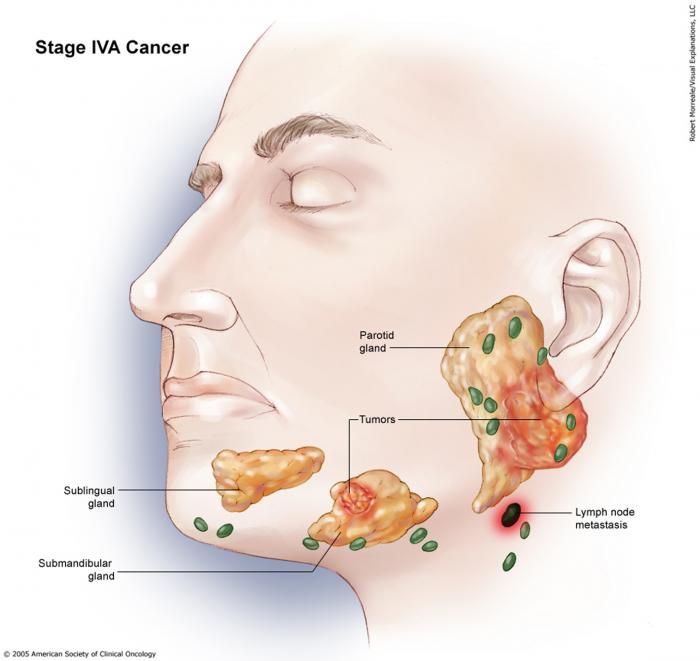

 When this occurs, it may indicate an infection, such as HIV or mononucleosis, or an immune system disorder, such as lupus or rheumatoid arthritis
When this occurs, it may indicate an infection, such as HIV or mononucleosis, or an immune system disorder, such as lupus or rheumatoid arthritis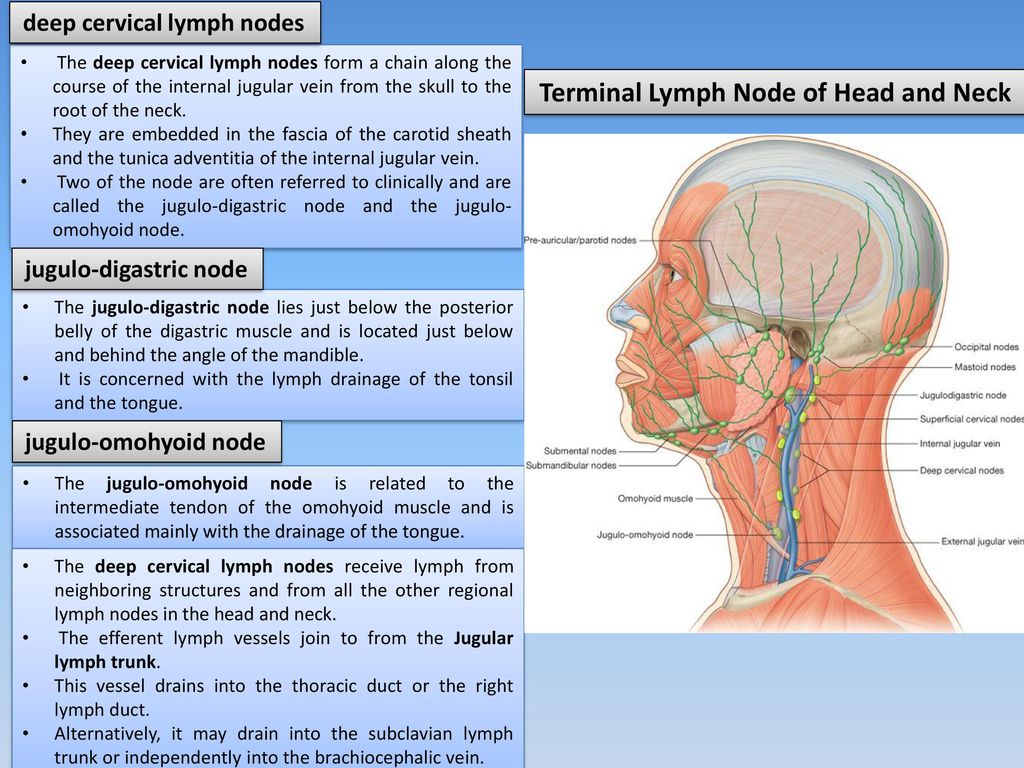 The site of your swollen lymph nodes and your other signs and symptoms will offer clues to the underlying cause.
The site of your swollen lymph nodes and your other signs and symptoms will offer clues to the underlying cause.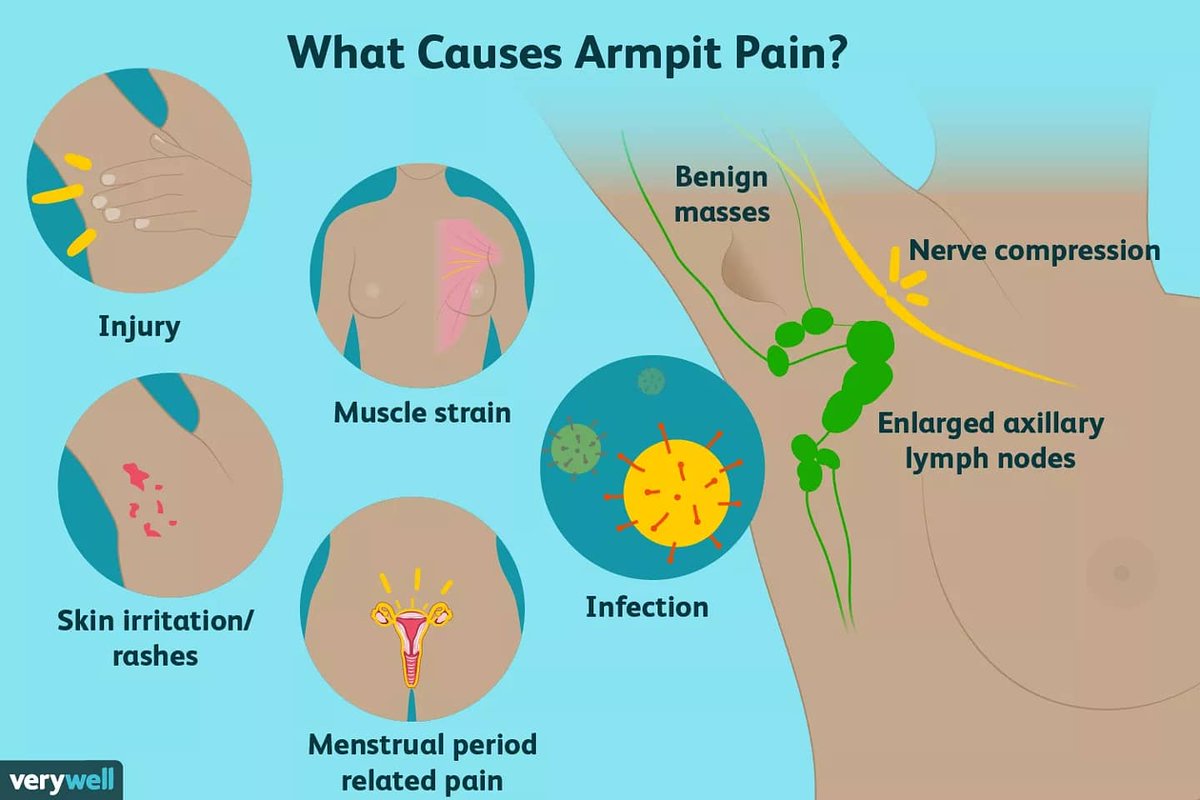
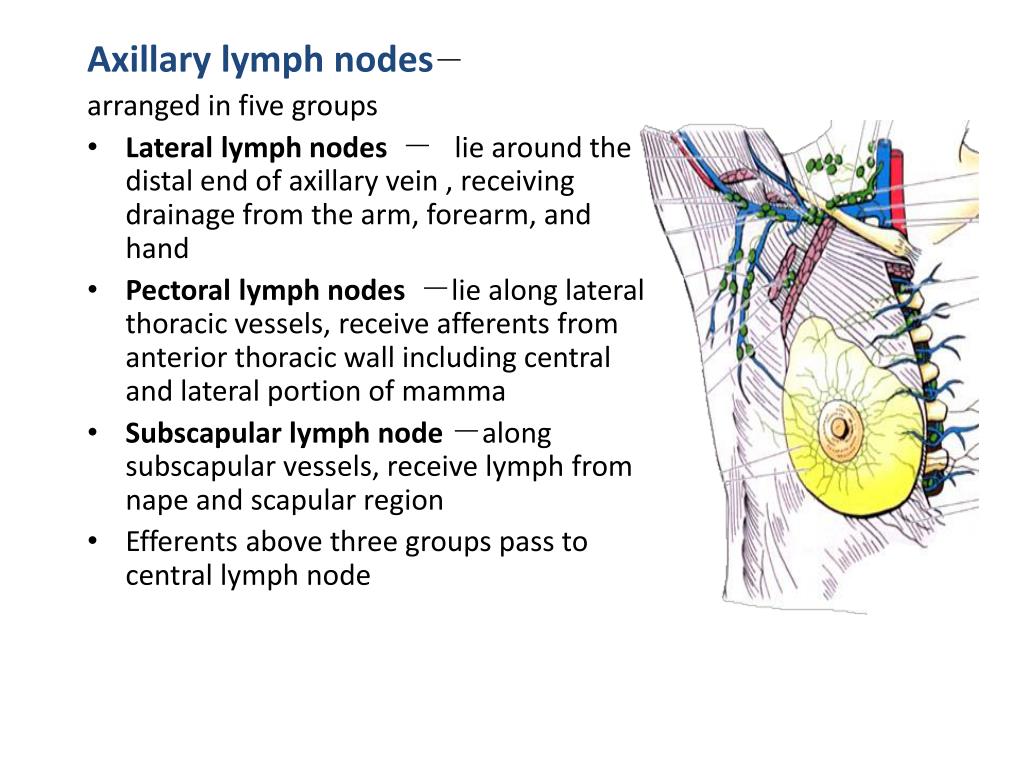 At the time you make the appointment, ask if you need to do anything in advance.
At the time you make the appointment, ask if you need to do anything in advance.